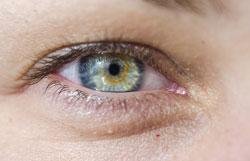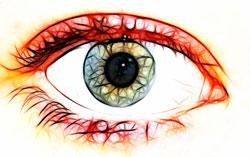Our eyes are truly remarkable organs. They not only allow us to perceive the vibrant world around us in stunning detail, but they can also reveal vital clues about our overall health, including hidden signs of high cholesterol and eyes .
Early detection of high cholesterol is crucial for preventing serious health complications, and a trip to your ophthalmologist might be the key to uncovering this silent threat.
Early Detection Through Your Ophthalmologist
Often, high cholesterol and even high blood pressure progress silently with no symptoms in the early stages.
During a routine eye exam, your ophthalmologist, a medical doctor specializing in eye care, might be the first to detect potential signs by examining your eyes for specific formations.
These formations, like Retinal Vein Occlusion, Xanthelasma, Hollenhorst Plaques, and Circumferential Arcus, can indicate cholesterol buildup in the body.

Can an eye doctor tell if you have high cholesterol?
While an eye exam can't definitively diagnose high cholesterol, your ophthalmologist can identify signs that suggest cholesterol buildup. These signs, however, need to be confirmed through a blood test by your doctor.
Early detection through an eye exam allows you to take action and potentially prevent future health complications. Here's how an ophthalmologist examines your eyes for signs of high cholesterol:
- Dilated Eye Exam: During a dilated eye exam, your ophthalmologist will use eye drops to widen (dilate) your pupils, allowing them to see the back of your eye in more detail. This allows for a thorough examination of the retina, blood vessels, and optic nerve for any abnormalities that might suggest cholesterol buildup.
- Evaluation of Blood Vessels: Cholesterol buildup in the arteries can narrow or block blood vessels throughout the body, including the delicate blood vessels in the eye. Your ophthalmologist will examine the blood vessels in your eye for signs of narrowing or blockage, which could indicate similar issues throughout your cardiovascular system.
- Looking for Specific Signs: Certain signs like cotton wool spots (small, white patches on the retina) or bleeding in the eye can also be indicative of high cholesterol and its potential impact on the retina.
What are the eye conditions caused by high cholesterol?
High cholesterol can contribute to several eye conditions, some more serious than others. Here's a closer look at how high cholesterol can affect your eyes:
- Retinal Vein Occlusion: This serious condition occurs when cholesterol buildup in the arteries narrows or blocks the veins draining blood from the retina. This blockage can damage the retina, the light-sensitive layer at the back of the eye responsible for converting light signals into electrical signals sent to the brain. This damage can lead to vision loss, blurred vision, or floaters (seeing dark shapes moving in your field of vision).
- Xanthelasma: These are small, yellowish deposits of cholesterol that appear on the inner corners of the eyelids. While harmless and usually painless, they are a clear sign of high LDL cholesterol (1).
- Hollenhorst Plaques: These are cholesterol emboli (clots) that lodge in retinal blood vessels. They can cause temporary or even permanent vision loss if they block blood flow to the optic nerve, the bundle of nerve fibers that transmits visual information from the eye to the brain.
How Does Cholesterol Affect the Retina?
The retina is the light-sensitive layer at the back of the eye responsible for converting light signals into electrical signals sent to the brain.
Cholesterol buildup in the arteries can restrict blood flow to the retina, depriving it of essential oxygen and nutrients. This can damage the retinal cells and lead to vision problems, including:
- Vision Loss: In severe cases, high cholesterol can lead to permanent vision loss if it damages the retina or optic nerve.
- Blurred Vision: Restricted blood flow to the retina can cause blurred vision, making it difficult to see clearly.
- Floaters: These are small, dark shapes that appear in your field of vision due to bleeding or other changes in the vitreous humor (the gel-like substance that fills the inside of your eye).
Early Detection of High Cholesterol in Eyes
The key to managing high cholesterol and protecting your eye health is early detection. During a comprehensive eye exam, your ophthalmologist will look for signs like:
- Narrowed blood vessels: Cholesterol buildup can narrow the blood vessels in the eye, which can be seen during a dilated eye exam.
- Cotton wool spots: These are small, white patches that can appear on the retina due to damaged blood vessels and leakage of fluid.
- Bleeding in the eye: Cholesterol buildup can increase the risk of bleeding in the eye, which can appear as red spots or streaks.
Treatment for Cholesterol Deposits Around Eyes
While Xanthelasma, the most common cholesterol deposit around the eyes, is usually harmless, some people may choose to have it removed for cosmetic reasons. Treatment options include:
- Surgical excision: A dermatologist or ophthalmologist can remove the deposit with a scalpel or laser. This is a safe and effective procedure, but there is a small risk of scarring.
- Electrosurgery: This procedure uses an electrical current to remove the deposit. It is a faster option than surgical excision, but it may leave a slight indentation in the skin.
- Chemical peels: Certain chemicals can be used to remove the top layer of skin containing the deposit. This is a less invasive option, but it may not be as effective as other methods.
Can High Cholesterol Cause Blindness?
Left untreated, high cholesterol can contribute to serious eye conditions that can lead to vision loss or even blindness. Here's how high cholesterol can lead to blindness:
- Macular Degeneration: High cholesterol is a risk factor for age-related macular degeneration, a leading cause of blindness in older adults. This condition damages the macula, the central part of the retina responsible for sharp central vision.
- Glaucoma: Cholesterol buildup can also contribute to glaucoma, a condition that damages the optic nerve. Glaucoma can cause gradual vision loss and eventually lead to blindness if left untreated.
Early detection and management of high cholesterol are crucial to prevent these complications. If you have any concerns about high cholesterol or notice any changes in your vision, schedule an appointment with your doctor and ophthalmologist.
Best Diet to Lower Cholesterol and Improve Eye Health
A healthy diet plays a vital role in managing cholesterol and promoting eye health. Here are some dietary tips to lower cholesterol and improve eye health:
- Limit saturated and trans fats: These unhealthy fats raise LDL cholesterol levels. Choose lean protein sources, whole grains, and healthy fats like those found in avocados and olive oil.
- Increase soluble fiber: Soluble fiber found in oats, beans, and fruits can help lower LDL cholesterol by trapping cholesterol in the digestive system and removing it from the body.
- Eat plenty of fruits and vegetables: These are rich in antioxidants, including lutein and zeaxanthin, which protect your eyes from damage caused by free radicals.
- Maintain a healthy weight: Obesity is a risk factor for high cholesterol and can also increase your risk of developing diabetes, another condition that can damage your eyes. Losing weight can help improve your cholesterol levels and overall health.
Living with High Cholesterol and Eye Problems
If you have high cholesterol and eye problems, it's important to work closely with your doctor and ophthalmologist to develop a comprehensive treatment plan. This may include:
- Medication: Your doctor may prescribe medications like statins to lower your LDL cholesterol levels.
- Lifestyle changes: A healthy diet, regular exercise, and weight management are crucial for controlling cholesterol and improving your overall health.
- Eye care: Your ophthalmologist may recommend regular eye exams to monitor your eye health and check for any changes related to high cholesterol.
- Treatment for eye conditions: Depending on the specific eye condition caused by high cholesterol, your ophthalmologist may recommend additional treatments, such as laser surgery for glaucoma.
How Often Should I Get My Eyes Checked for Cholesterol?
The recommended frequency for eye exams depends on your individual risk factors for eye disease and your overall health.
If you have high cholesterol, you may need to get your eyes checked more frequently, perhaps annually or even more often depending on the severity of your cholesterol and any eye issues you may have. Discuss this with your ophthalmologist to determine the best schedule for your individual needs.
Bottom Line
By following these tips and working closely with your healthcare team, you can manage high cholesterol, protect your eye health, and maintain good vision for years to come.

